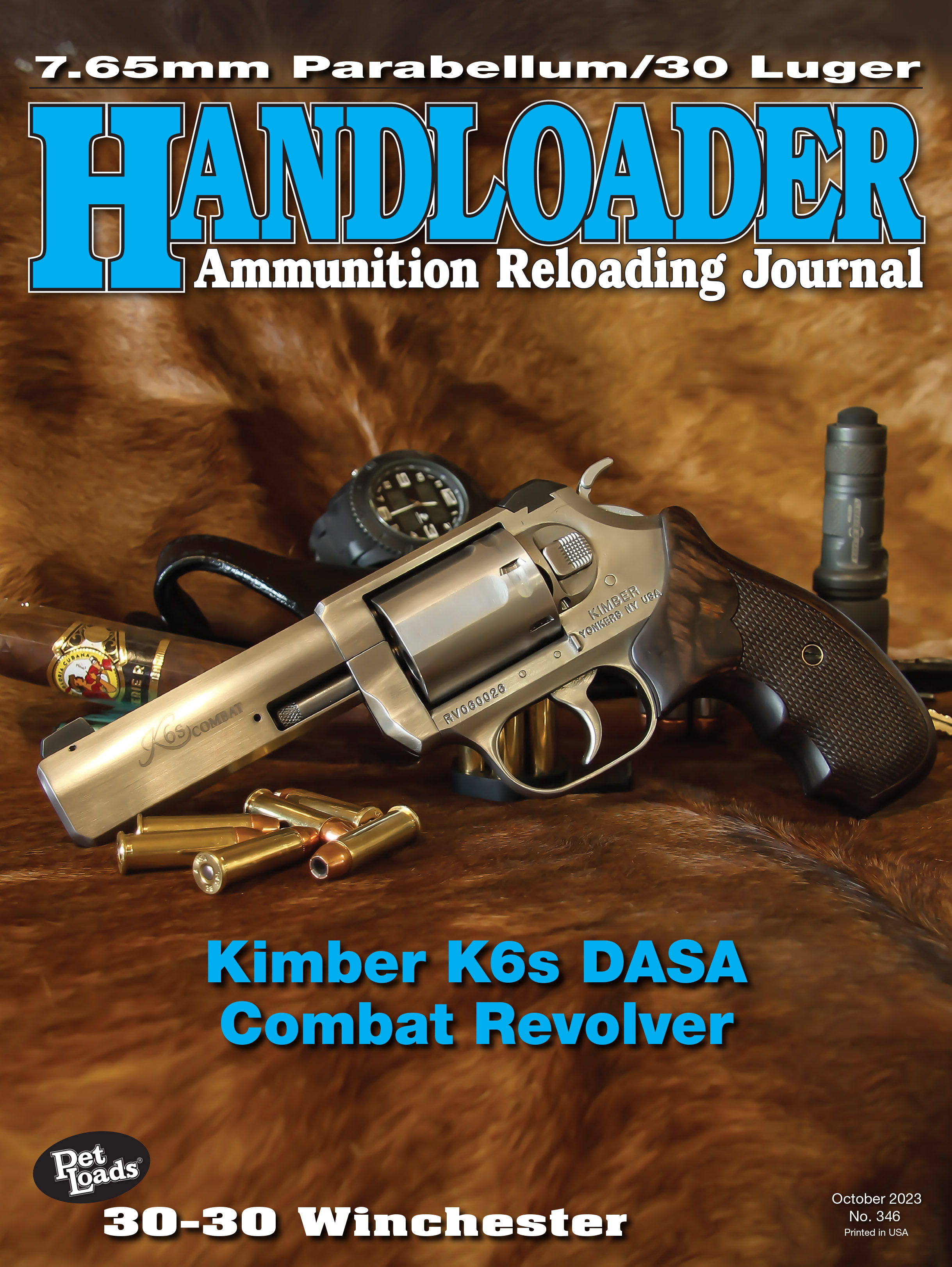From the Hip
The Colt Custom Shop Government Model 1911 45 ACP
column By: Brian Pearce | October, 23
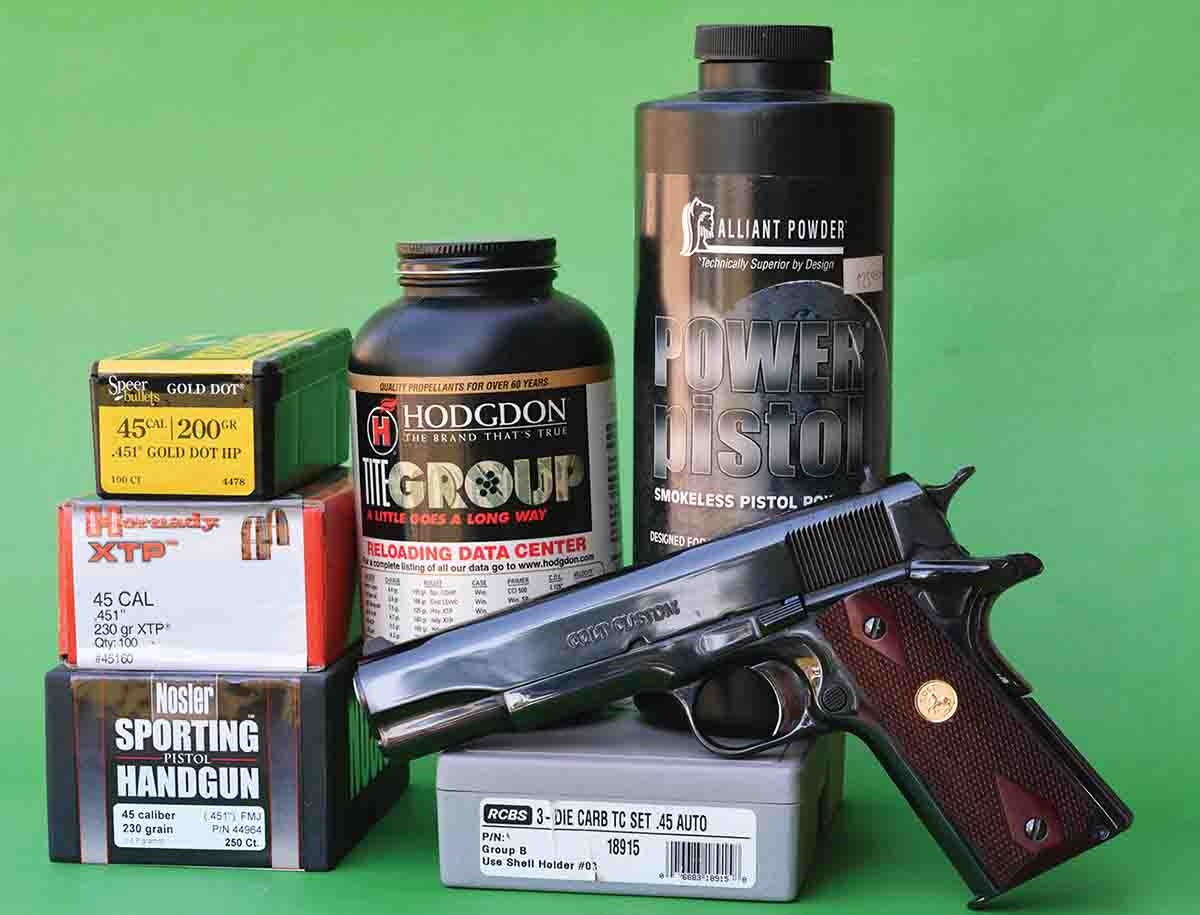
The military recognized the possible advantages of auto-loading pistol designs including the Mauser C96 “Broomhandle,” Mannlicher M1894, Colt M1900 and others, which were all evaluated or tested in one way or another, but failed. Noted designer John Browning set out to improve his M1900 pistol design that ultimately lead to the development of the Colt Model 1905 that was 45 caliber (based on a cut-down 30-06 case), but loaded with 200-grain bullets. The military liked this version, but still wanted further improvements. Over the next few years, Browning continually worked to evolve the design with many improvements and patents that lead to the Model 1909, while ammunition was changed to contain 230-grain bullets.
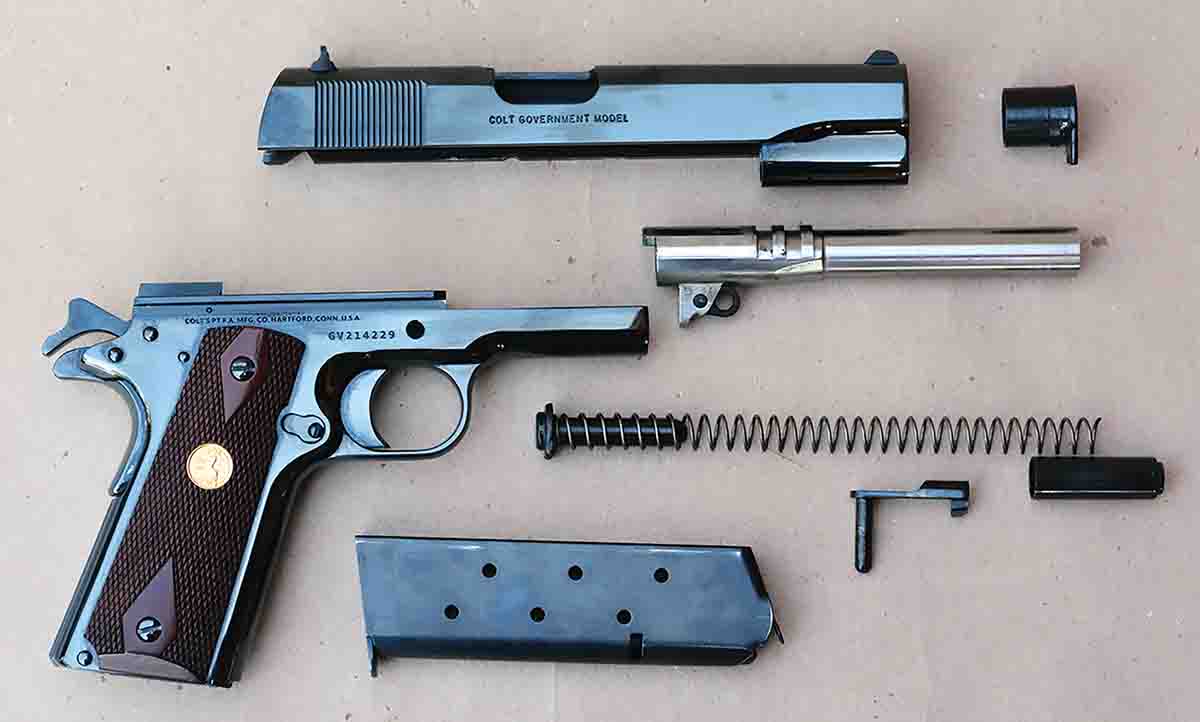
Military brass was excited to begin testing and evaluating the new Browning designed, Colt-manufactured pistol that began in 1910. Most of the pistols that were competing for the military contract had already been eliminated, but pistols from Savage and three specially constructed 45-caliber Luger pistols (that were ultimately withdrawn from the tests at the request of Georg Luger due to the cost of production being excessive) were submitted.
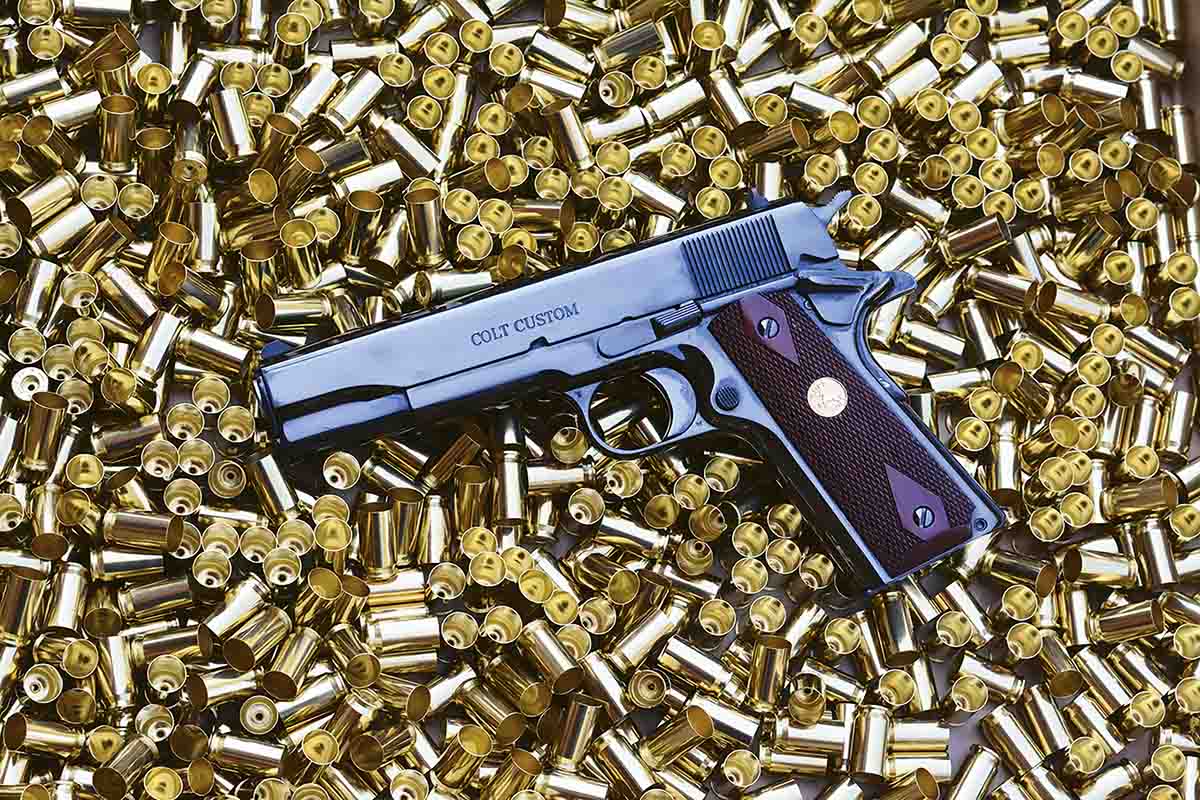
Many consider the first combat use of the Model 1911 to have taken place during World War I (1917), but the first combat probably took place in the British Empire. U.S. troops first used them in combat in 1913 in the Philippines, followed by the Veracruz landing in 1914. Another interesting fact is that beginning in 1914, approximately 5,000 Model 1911s were more or less smuggled across the border into Canada for military use. It seems that the neutrality act at the time prevented U.S. manufacturers from selling the U.S. military kit to other countries. So procurement officers purchased these guns personally and then arranged for them to be moved across the border. They were then used by the Canadian Expeditionary Force in Europe (on the Western Front) in January 1915, and in severe combat in March 1915, in the Battle of Neuve Chapelle, followed by the 2nd Battle of Ypres in April of that same year. Clearly, many other world militaries recognized the virtues of this remarkable 45-caliber auto-loading pistol that immediately proved its effectiveness in battle.
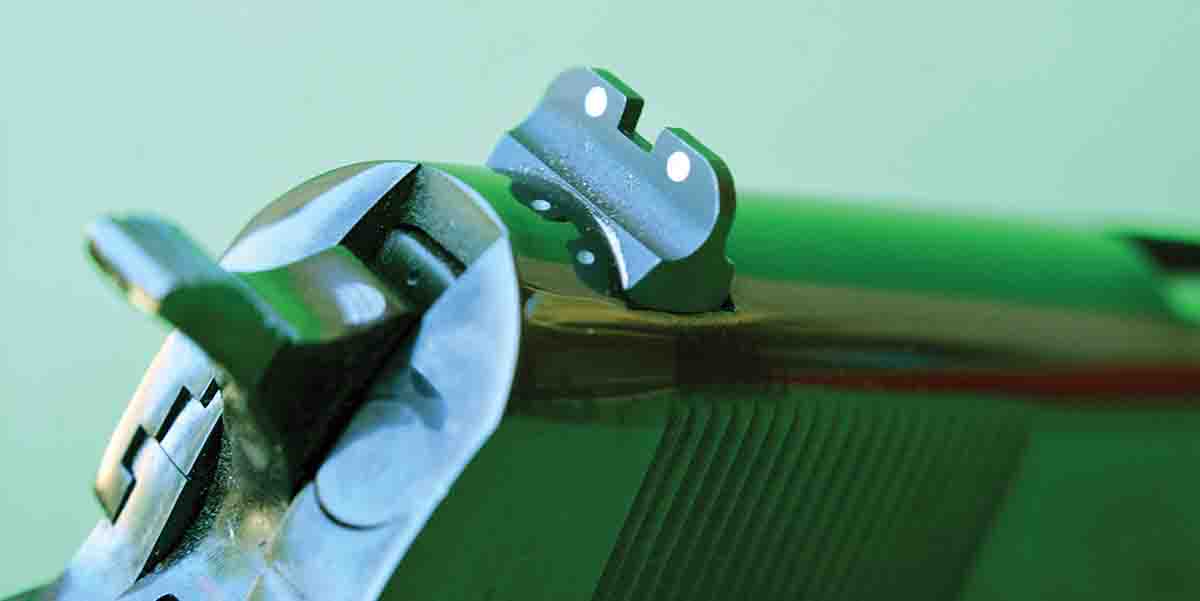
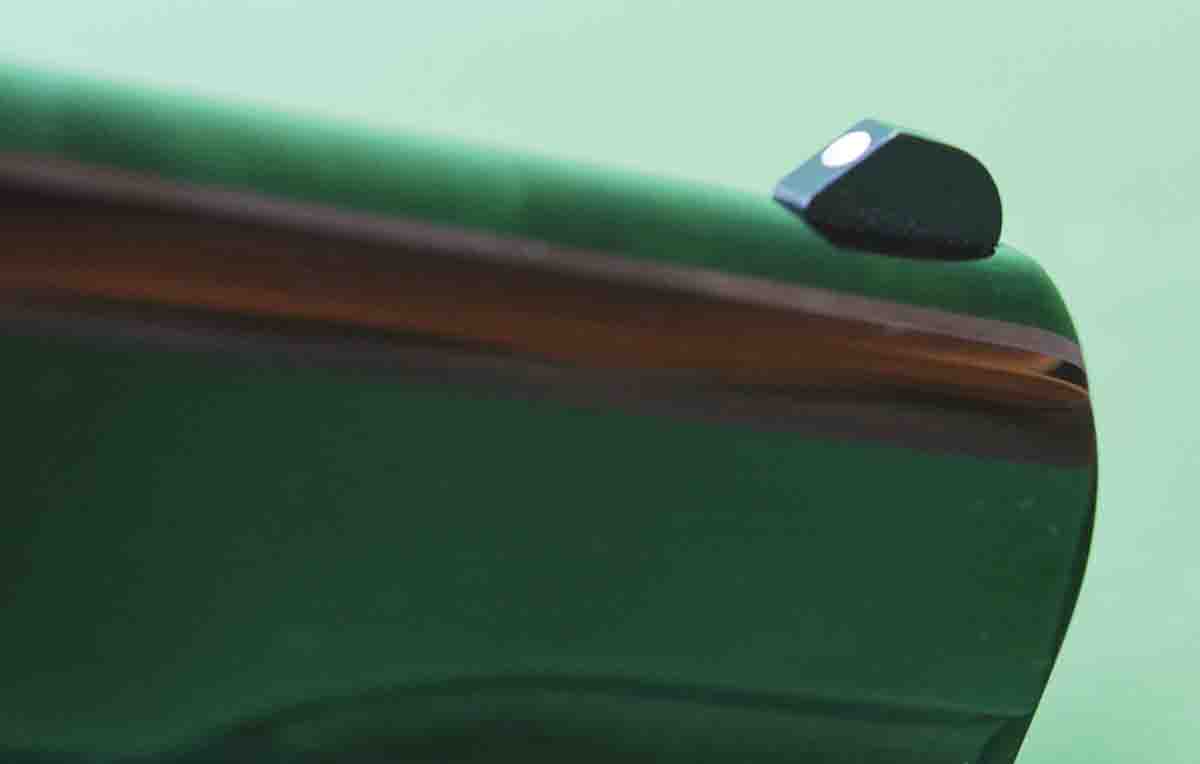
While the basic 1911 has remained unchanged, in recent decades it has become widely popular with special features that include a high-hand, position-grip safety, commander-style hammer or slotted high-speed hammer, ambidextrous safety, extended safety, lowered and angled ejection port, front and rear sights dovetailed mounted into the slide and that are of various designs and sight pictures, Picatinny rail, lightweight extended trigger, match-grade barrels, beveled magazine well, custom fit barrel bushing, guide rod, etc. These features (and many others) first began appearing on custom-built pistols, but have now become standard on many production pistols from Colt and nearly countless manufacturers that also produce 1911 pistols to compete with the original.
However, many shooters and traditionalists prefer the standard Government Model 1911 configuration that is still offered by Colt. Generally, this version is priced as a base model or entry level if you will. However, in considering a pistol to be reviewed herein, a Colt Custom Shop Government Model caught my eye. This upgraded version is a real beauty, as it features a high-polish “Colt Royal Blued Steel” that is reminiscent of period commercial pistols produced from 1911 through the 1930s. For clarification, period guns were finished with carbona blue that illuminates a comparatively light color and is especially pleasing to the eye. This finish was achieved by preparing the steel using a combination of walrus hide and whale oil in the polishing process, then placing it in a fired oven containing charcoal and whale oil, which was baked for several hours with periodic scrubbing with oakum and ash. This process was repeated up to six times, or until the craftsman was satisfied. Today, Colt uses commercial polishing compounds to prepare the steel, with parts being hot tank blued, also known as black oxide, which is practical and allows the gun to be produced at a reasonable price. Regardless, this Custom Shop Government Model is striking, shows good attention to detail and is well executed as the corners and edges are void of being “pulled” or rounded during polish.
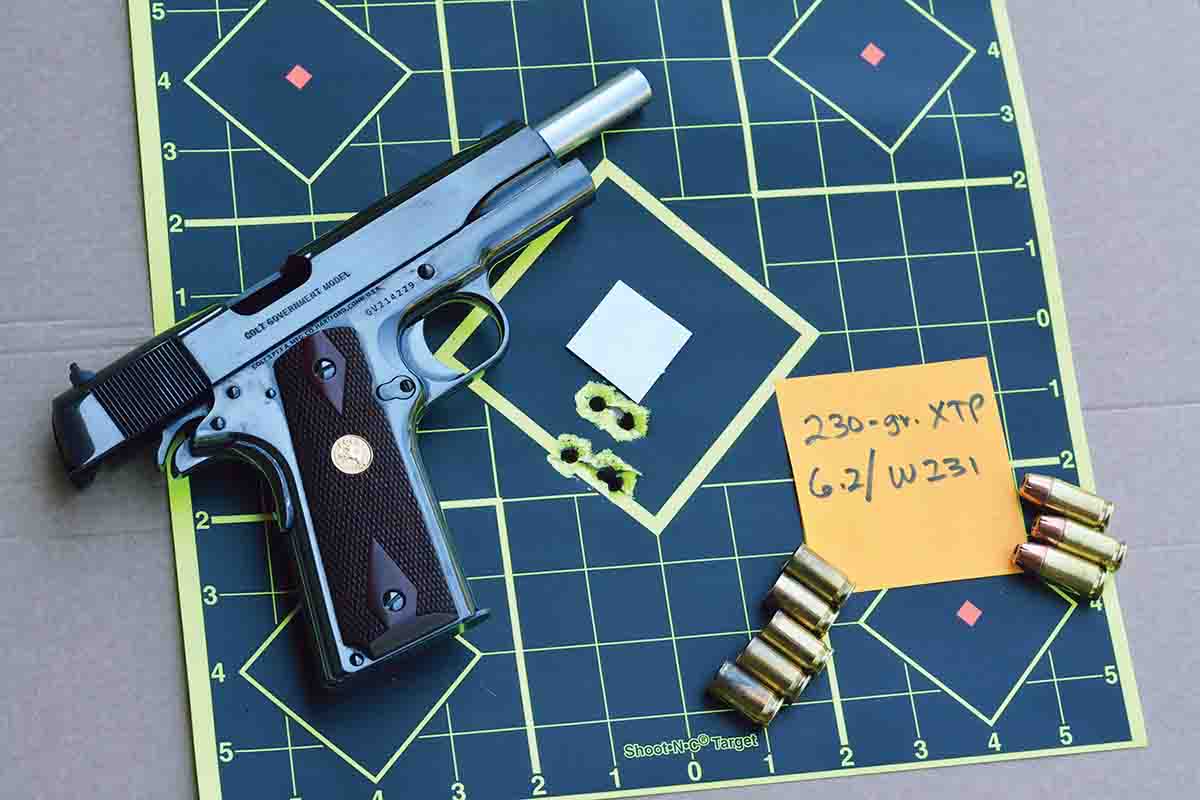
Two hundred rounds of handloads were fired prior to accuracy testing, which allowed the pistol to settle in. As can be seen in the accompanying table, most factory loads from Black Hills, Buffalo Bore, Federal and Hornady grouped into 1.80 to 2.20 inches at 20 yards. Based on my experience with many Model 1911 pistols, it is expected that groups will continue to shrink as the pistol has time to further settle in.
Moving on to handloads, accuracy was virtually identical to factory loads. All loads were assembled in new Starline cases, which were first full-length sized and neck expanded using RCBS dies and then primed with CCI No. 300 primers. After charging cases with powder and seating bullets, a taper crimp was applied that measured .470 inch. A couple of notable loads included the Hornady 185-grain XTP bullet pushed with 6.2 grains of Hodgdon Titegroup powder for a velocity of 999 fps. The average of three, five-shot groups at 20 yards was 1.85 inches. The tightest average groups consisted of the 230-grain Nosler Sporting Handgun FMJ bullet pushed to 901 fps using 5 grains of Accurate Nitro 100NF powder that averaged 1.80 inches.
To date, more than 600 rounds have been fired through the Colt Custom Shop Government Model, which has functioned flawlessly and has proven accurate. It is high quality, reliable and attractive. Prices are running around $1,499.99, which is more than 100 times what the U.S. Government paid for the first contract guns in 1911. It seems that quality guns are not only useful for many purposes including personal protection, but are also good investments that protect against inflation.
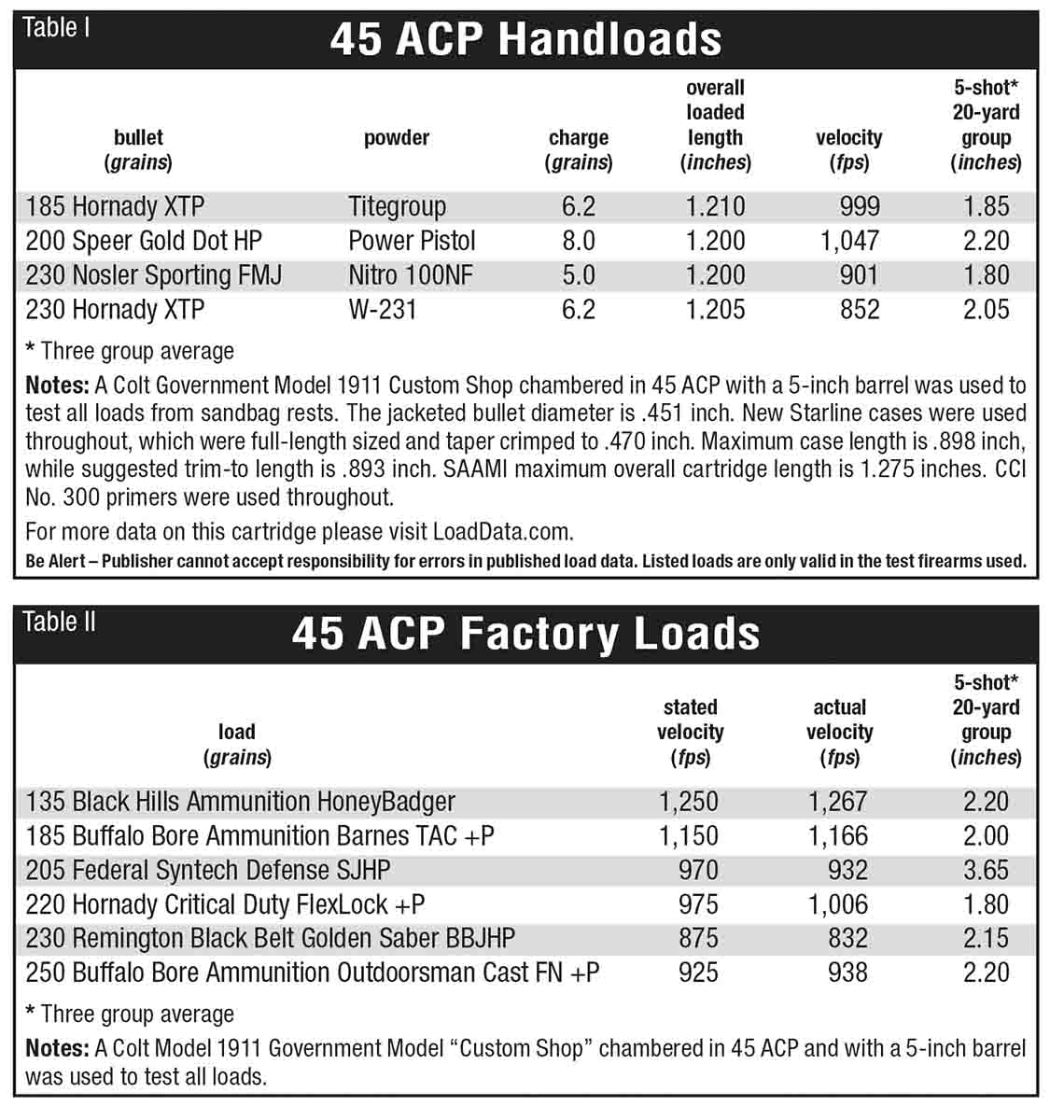
.jpg)


